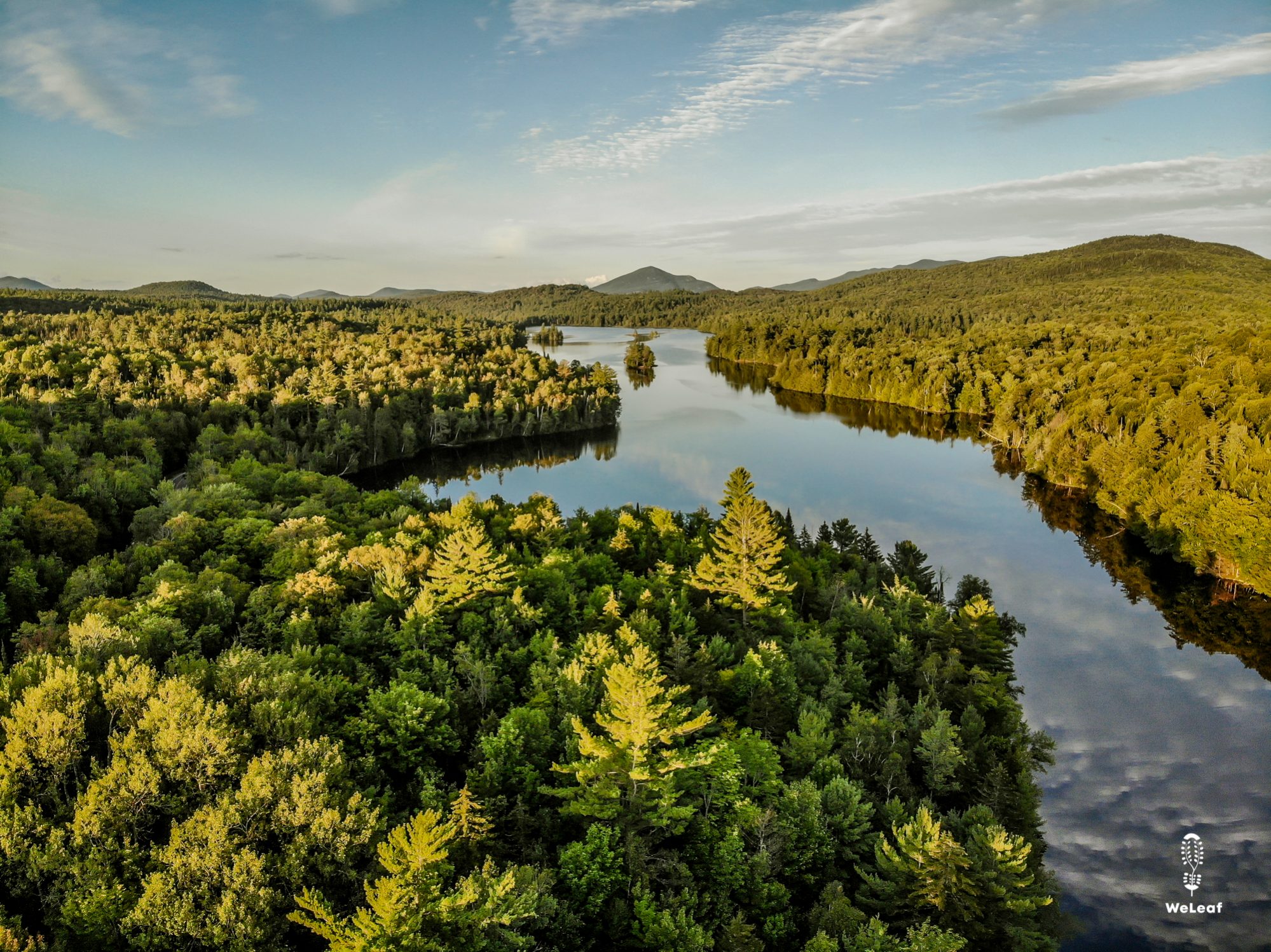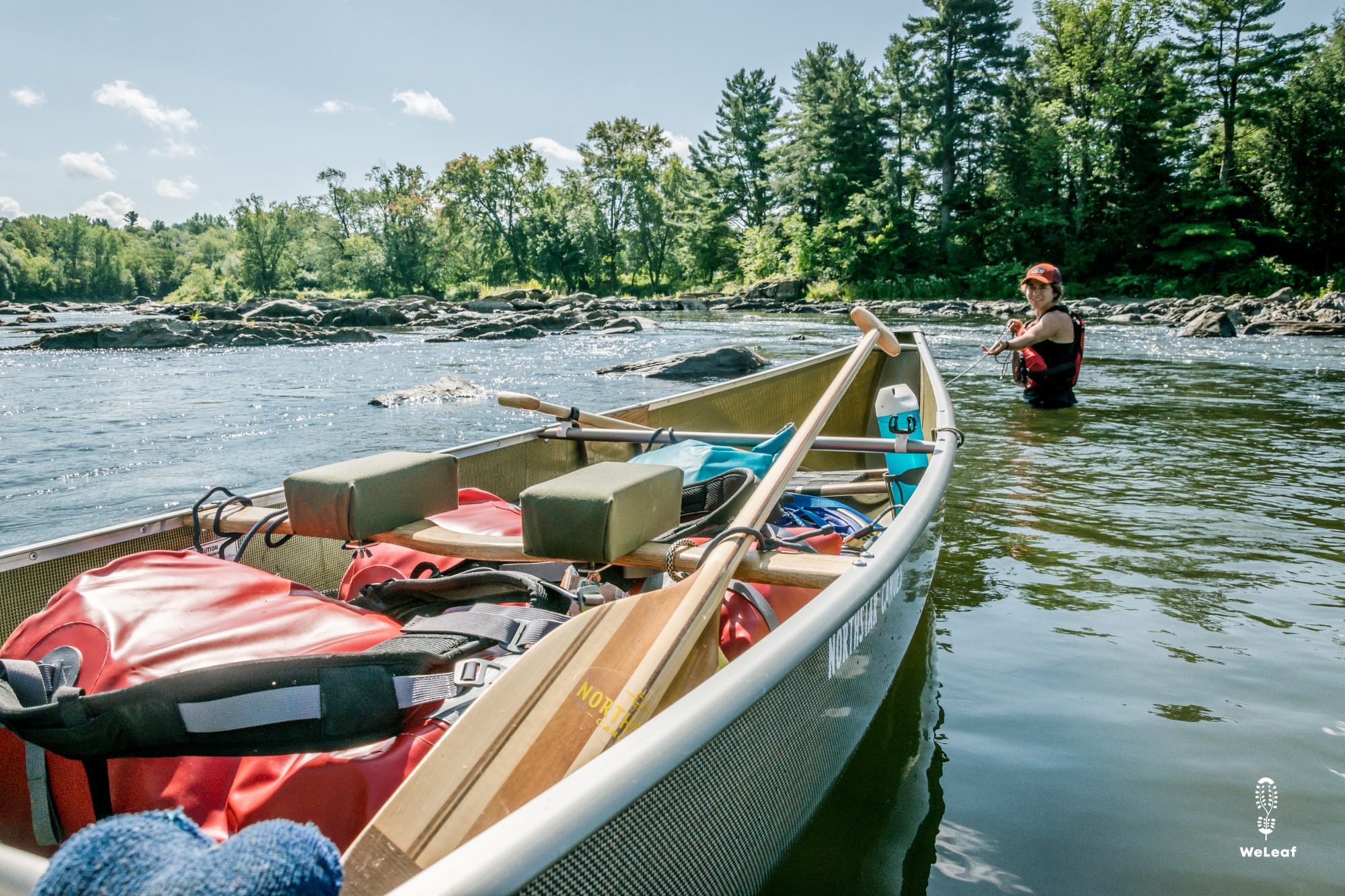
Leap of faith

10 tips for a long hike you didn’t think off
November 8, 2019
Packing list for a canoe trip
November 16, 2019
Monday August 26th - Lake Champlain
After a couple of days we have mastered the dry rivers, but now the real big boys are coming. Lake Champlain is one of the ten largest lakes in America, with a length of 190 kilometers and a water surface of 1.331 square kilometers, it supplies two hundred thousand people with water. The lake is both part of the US and Canada, but we turn off just before the Canadian border to one of the rivers that supplies the lake with water. That means that we will start on our first 'up-stream' section. We have to paddle 250 kilometers against the current on the entire NFCT and the Missisquoi River already is 110 kilometers of it. In short, it will be a few tough days.
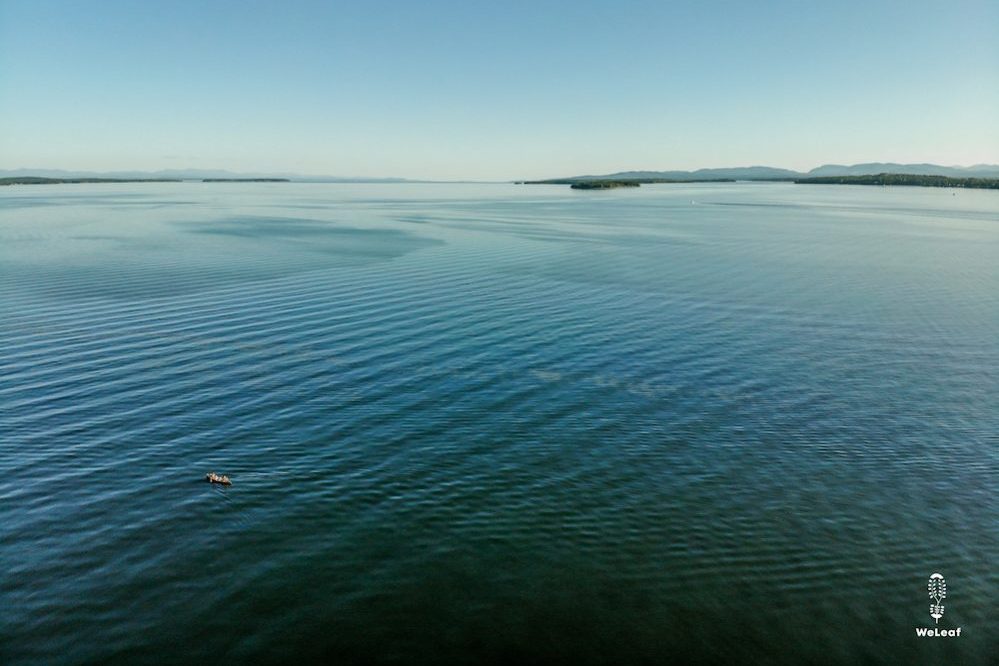
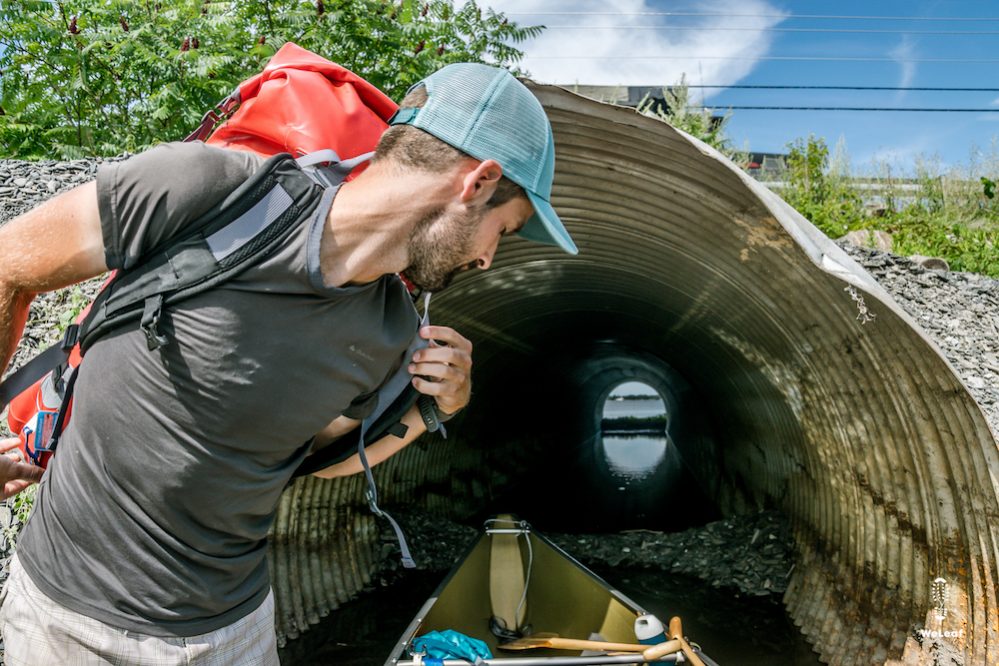
Around five in the afternoon we arrive at the put-in of Lake Champlain. Many people warned us that big lake can be dangerous and that you have to make the right choices. The large water surface can cause the wind to blow up considerably, resulting in ocean-like waves. Waves that can capsize canoes. Crossing coast to coast in particular is dangerous and they recommend doing it as early as possible in the morning or late in the afternoon when the wind calms down. In our head, Lake Champlain is the first major challenge of canoeing where we have to make smart and safe decisions. There are four crossings where the wind can blow, the rest is along the coast and hopefully more protected. We have already discussed the options a few times in recent days and the plan is to camp in the bay and leave very early in the morning to cover the lake in one go if the weather permits. But we didn't expect the scenario that we will saw at five o'clock in the afternoon. Lake Champlain is a perfect mirror, no breath of wind, no ripple on the water.
"Shall we cross already?" says Olivier, knowing that Zoë thinks the same, although it is getting dark soon.
"Of course. This is a gift, it would be a stupid choice not to cross now, but the risk that we will not find a place to sleep".
“We always find a place" Olivier confirms.
We make the first of the four crossings and disturb the perfect mirror with our paddles. We are the only ones on the quiet water and we can't resist wasting a bit of our daylight on making pictures. Then we really have to speed up, the sun is already on the horizon. The shores of the lake are steep and all private terrains. Finding a camping spot becomes a problem if we don't see anyone. We are lucky. We see a father sitting with his son on a luxurious terrace above the water.
"Everyone who is outside is at high risk," Zoë says laughing.
"What do you mean?" Asks Olivier.
"Because they are guaranteed to be approached by us and asked if we can use their yard for a camping spot," says Zoë as she turns her head towards Olivier.
In her head she tries to find the right words to break through the privacy. She feels a slight tension, but stands up with full confidence. When we get close enough, she asks if we can ask something. "But of course" is Bill's answer to our explanation. When we joined the decadent scene with a beer in our hand, looking at the beautiful view, we ask Bill how he undoubtedly responded to our question. "I've always wanted to meet NFCT paddlers, a great opportunity” he replies. Another proof that you have got a no, and you can get yes. Not much later we have a hot meal on our plates.
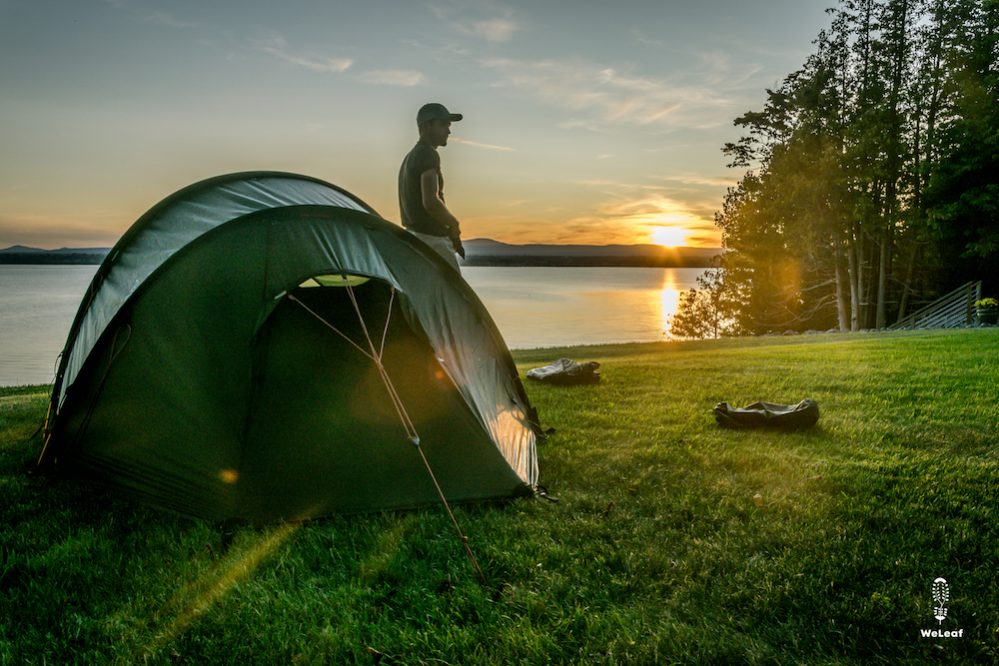
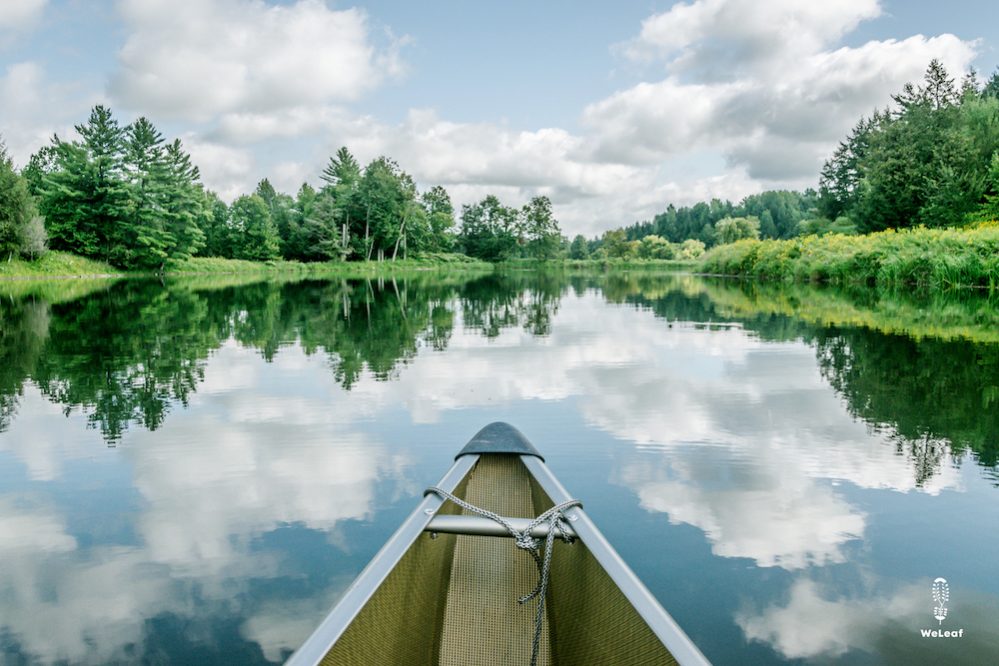
Bill and his son Eric live in a dream location in a beautiful house, but our tent has the most beautiful place. We set the alarm at half past five in the morning. "That is not the what we need" says Olivier, who sticks his head out the tent when the alarm goes off. The wind is strong and there are many waves on the water. "Let's have breakfast and leave before the wind blows harder" Bill woke up already and is preparing a bagel with an egg for us. His weather station says the wind will pick up in an hour. The second crossing immediately starts from Bill's house, one in which we have to cross three kilometers of open water. We have to make a choice, but we have no reference or experience on which to base ourselves, we only have common sense. We decide to go, it looks doable. Trying is the only option and if it is not possible, we will return. The wind is full from the south, unfavourable for the crossing, but afterwards very favourable for paddling north along the coast. There are more dangers on the crossing because three large ferries permanently sail between the two land points. We paddle with full power, both on the right side of the canoe.
As we get further from land, the wind blows harder en harder. We see the ripples on the water. There is no way back, and we realize that we take a risk to continue paddling, but also to return. The water comes threateningly at us with black rough waves. The waves are high and it is almost impossible to keep the canoe in a straight line. Our canoe feels void on the turbulent plain. The water splashes regularly in the boat and especially in the front Zoë feels the impact of the waves. Yet we feel that we have the boat under control. The only thing we can do is to paddle as hard as we can to get to the other side before the wind picks up more. We work like lions and slowly see the other side come closer. In our head we think back to yesterday's mirror surface. When we are only a few meters from the land we are relieved. We turn the canoe and now cruise with the strong waves in the back, a lot more stable. That was on the verge, but we now have at least one reference. When we see these waves the next time, we know what to do.
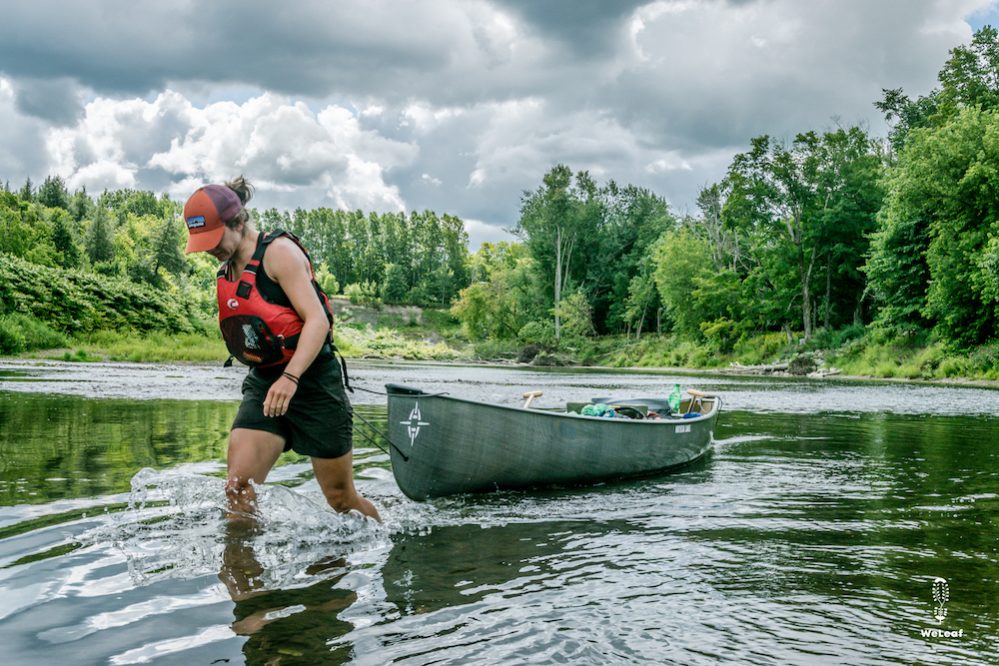
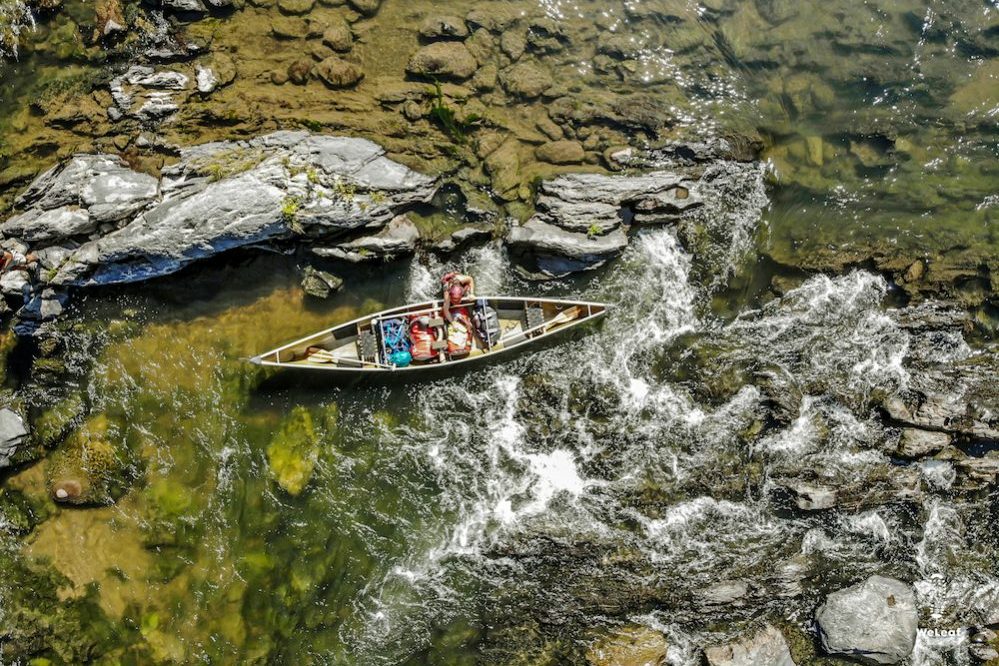
"I have to leave, my father-in-law has shot himself," he says, shaking his head
After a long day of 35 kilometers and three crossings, we have conquered the lake. We spend the night again in someone's garden and sail the next day against the current on the Missisquoi River that will bring us to Canada in a few days. It is a nature reserve and with all marshes it is difficult to find the right entrance. We take the wrong turn but luckily we end up on the same river. The current seems to be not too bad, on the other hand we have alternating strong headwinds, sun and rain. We also have alternating navigable water and less navigable water. We regularly have to get out of the boat to walk through the water. Sometimes against rapids. We arrive at a couple of beautiful camping spots. We are surprised by deer in the water, a Bald Eagle taking a dive to catch fish and a pair of beavers who jump into the water when we pass them along the shore. We can't believe it ourselves, but we've already done a quarter of the trail. We are getting ready for the last night in the US before we enter Canada. Our guidebook says that the Coons family receives Thru paddlers in their garden. Because the water is too low, we don't arrive at their house on the water, but via the road. A skinny man shakes hands with us and introduces himself. Indeed, we can put our tent in the yard and they even have an outside toilet. We are just eating our dinner at the picnic table when the police arrive and asks if Kaiser has time. Not much later Kaiser comes to us. "I have to leave, my father-in-law has shot himself," he says, shaking his head, without too much seriousness. We blink three times and don't know what to say. "I'm so sorry to hear," we say. "He is an idiot, he always brings trouble" is his answer.
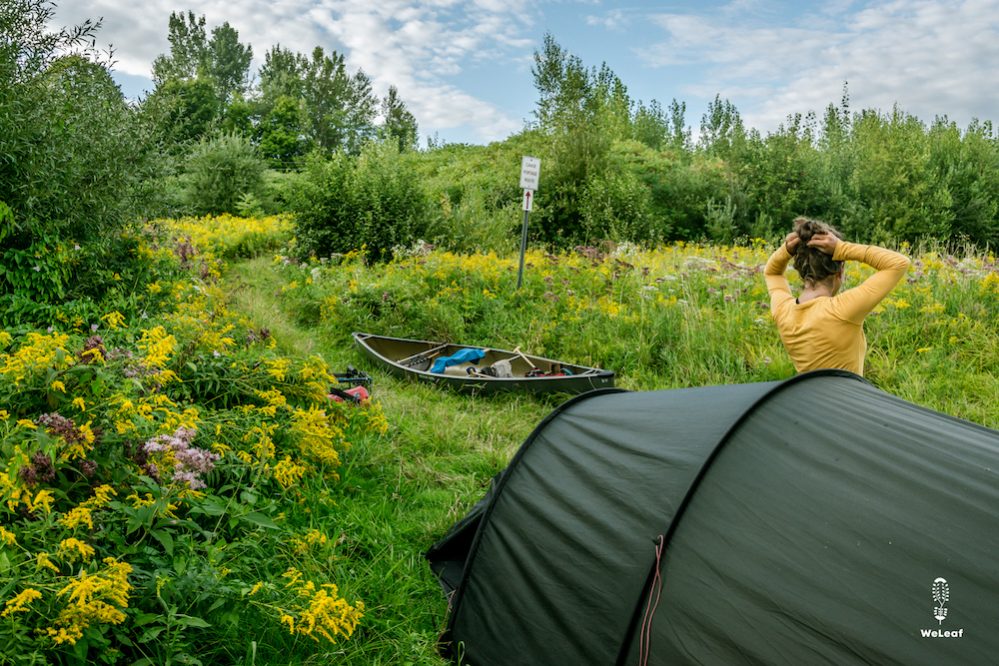
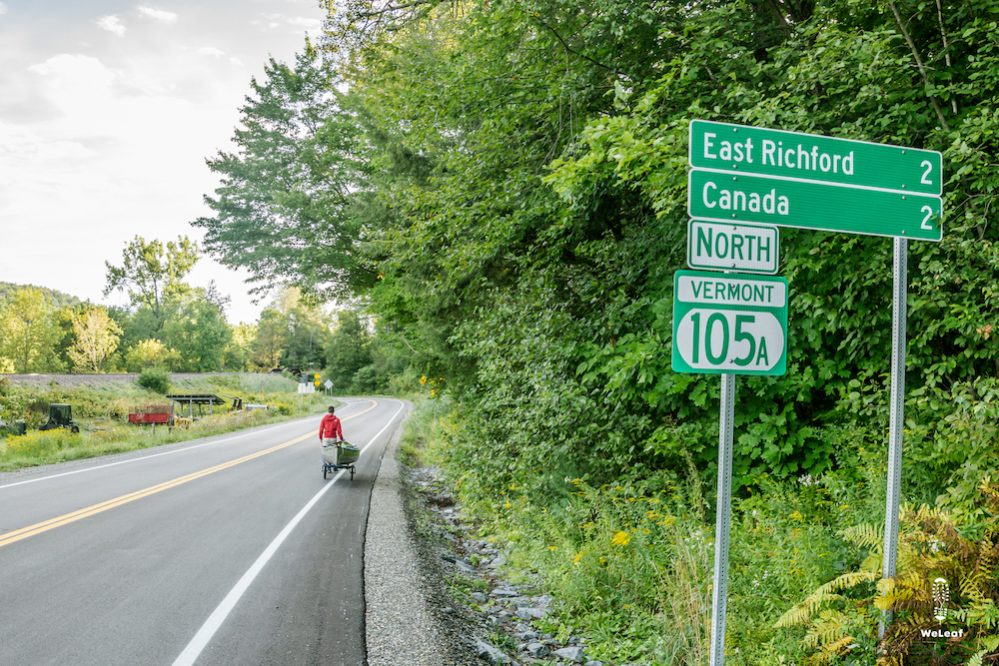
They still didn’t return the next morning. We throw a thank you card in the mailbox and continue our portage to Canada. We never had a reference to make the right choices, but in the meantime we have tried all facets and made our own decisions. Learning to estimate the wind is just one of the many experiences we learn during the first days in the canoe. We learn that our canoe is very stable and we will not tip over quickly, even with high waves and strong winds. We learn to paddle upstream and to pull the canoe through rapids. We learn to read the water flow and estimate where the river is deepest, usually the outer bend, but sometimes also the inner bend. We learn to carry the canoe above our heads and now also know the most efficient way to do a portage in one go. We learn that the paddles, unlike a kayak, do not make us wet at all. We get wet feet because we occasionally have to get out of the canoe. And we learn that rain during canoeing is not disturbing as when cycling or walking. On the contrary, the splashing water droplets on the surface of the water are fascinating to look at and we don’t have to worry about wet feet, because they are wet anyway. A leap of faith was not a bad choice at all, because we quickly got to know our new environment. We have tried it all and have now found our own references.
There is no way back, and we realize that we take a risk to continue paddling, but also to return.
